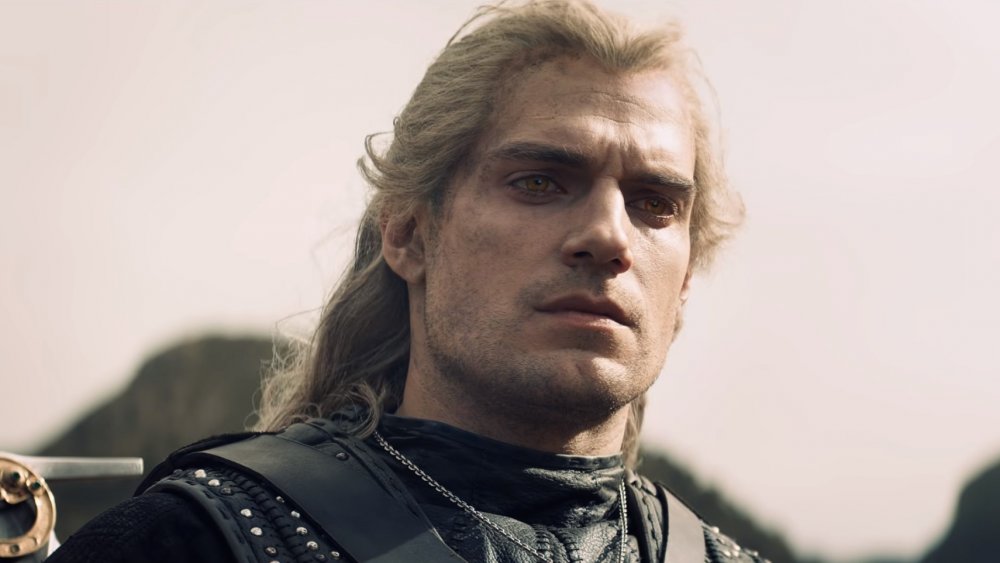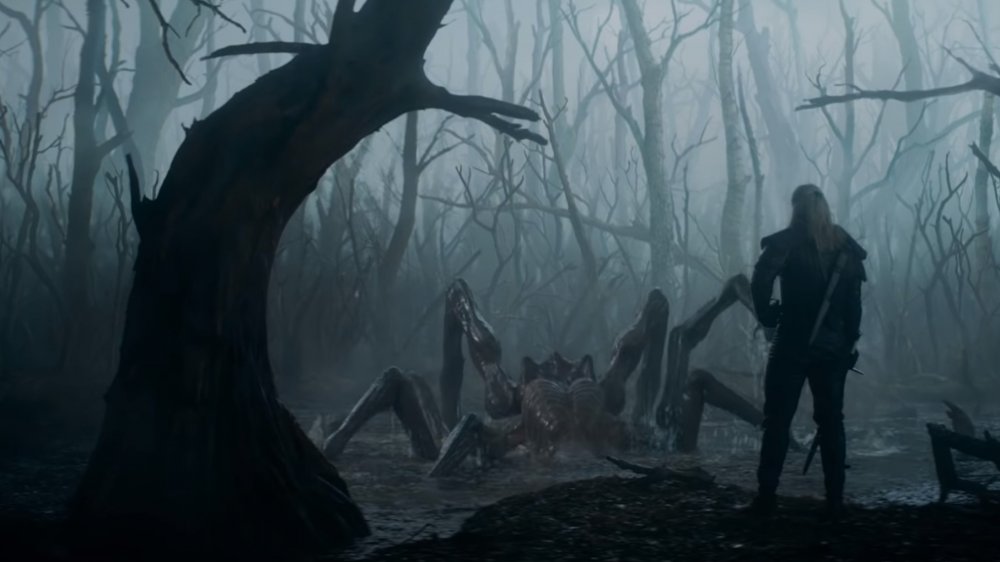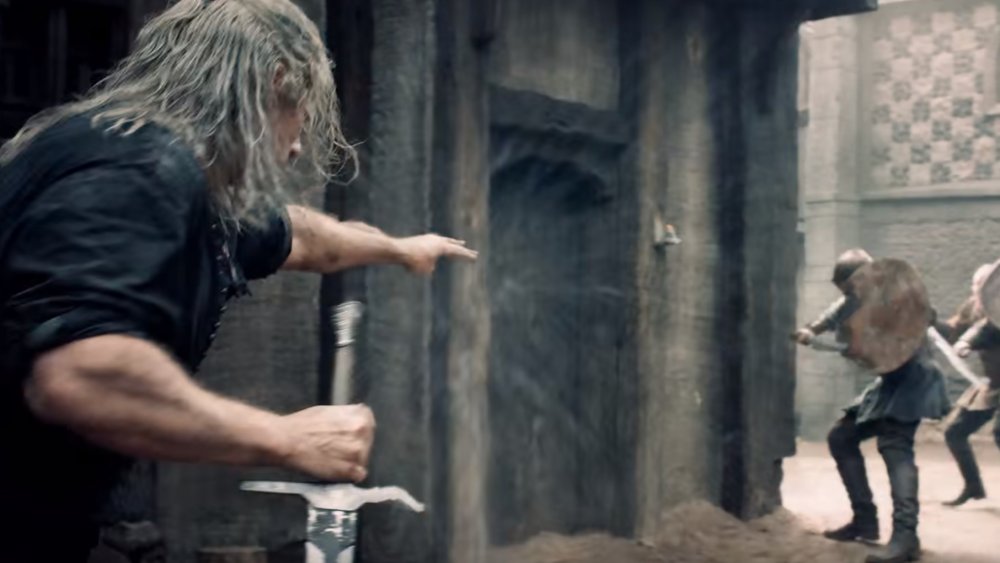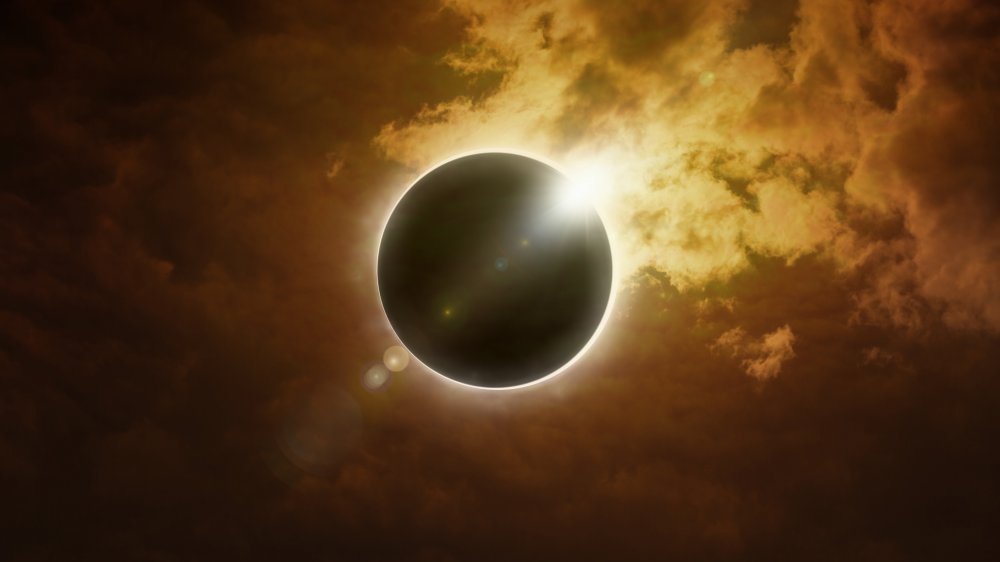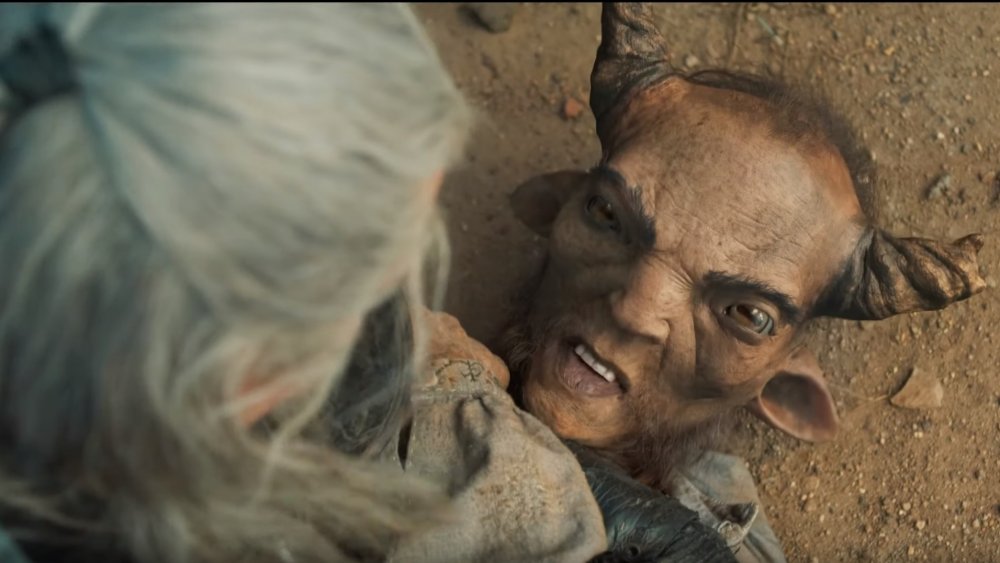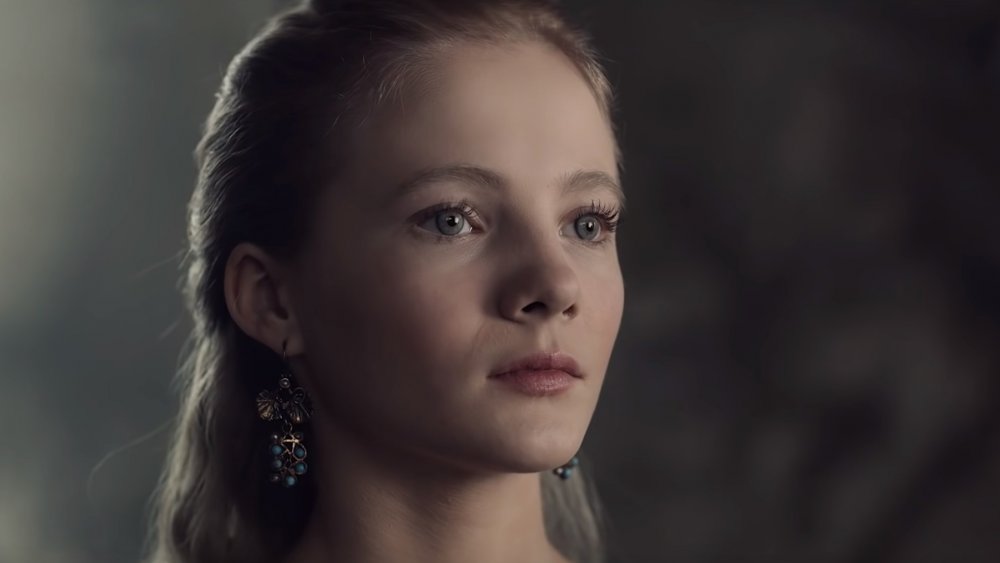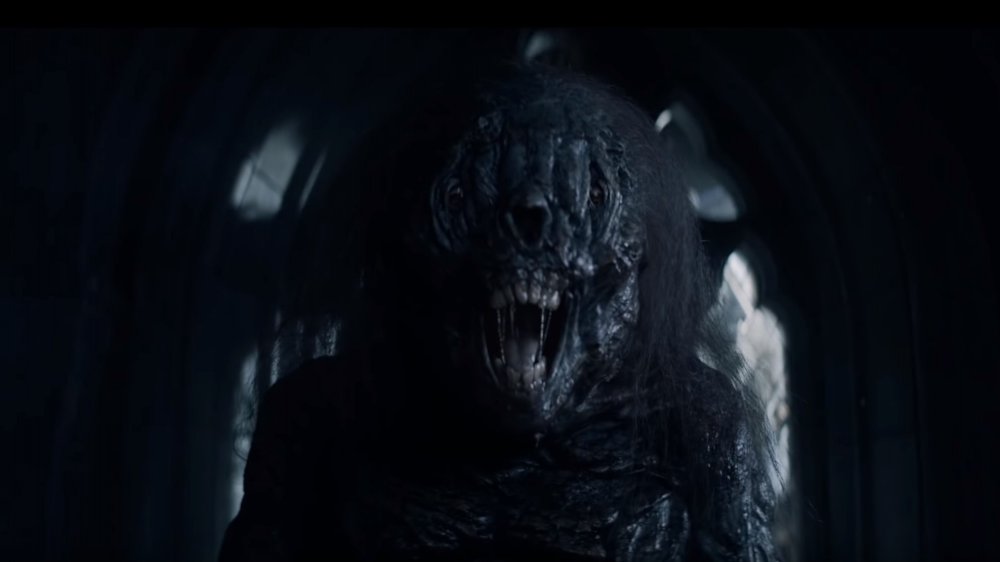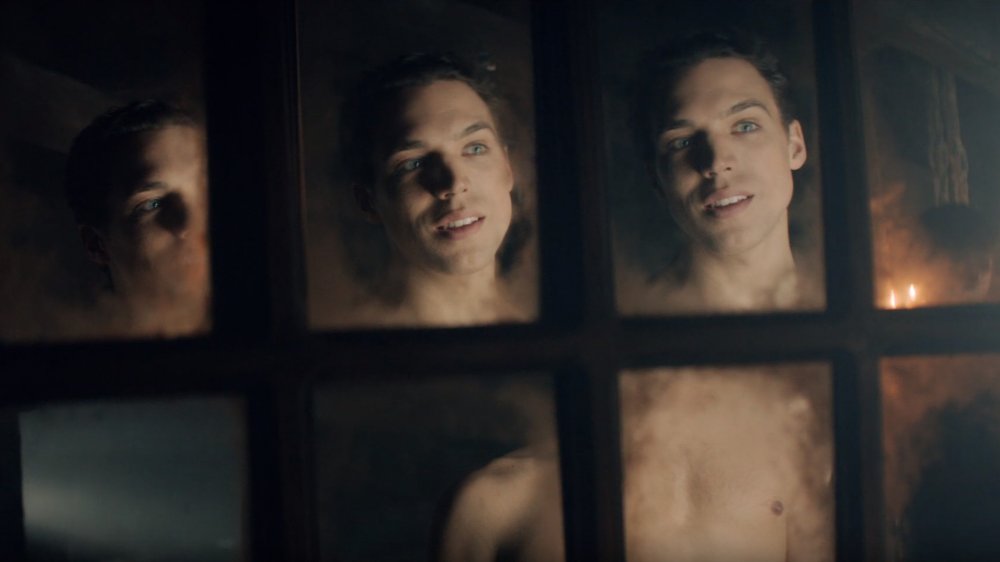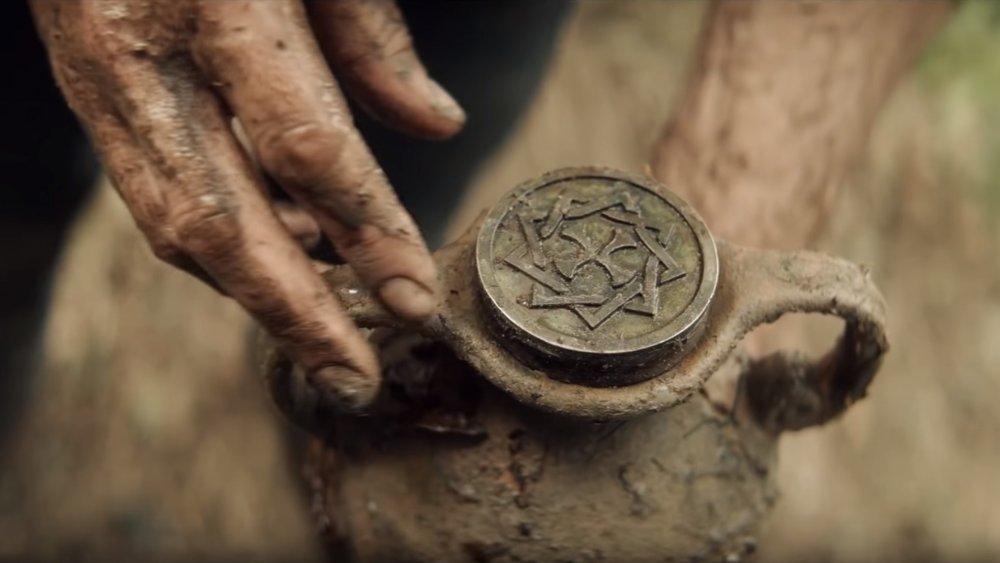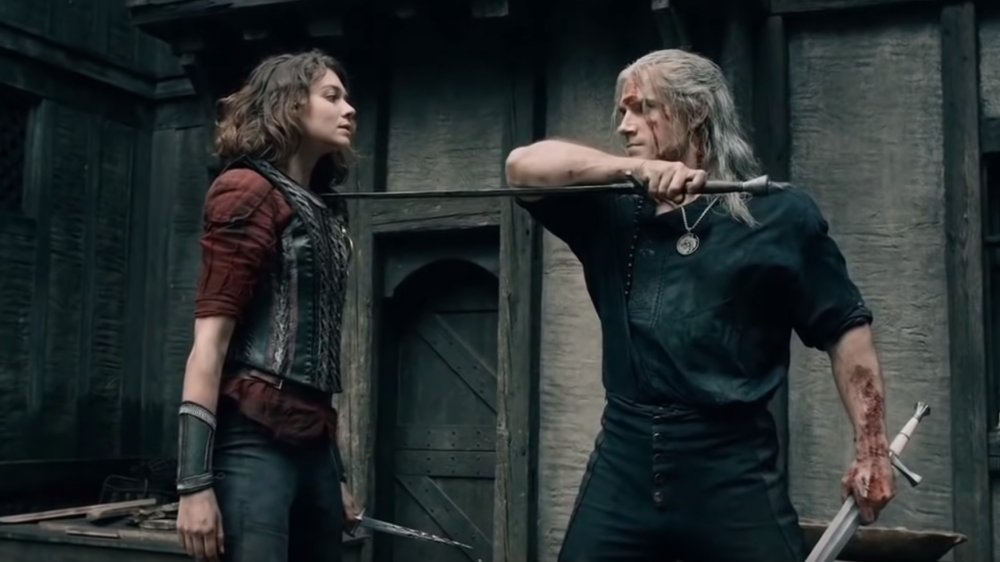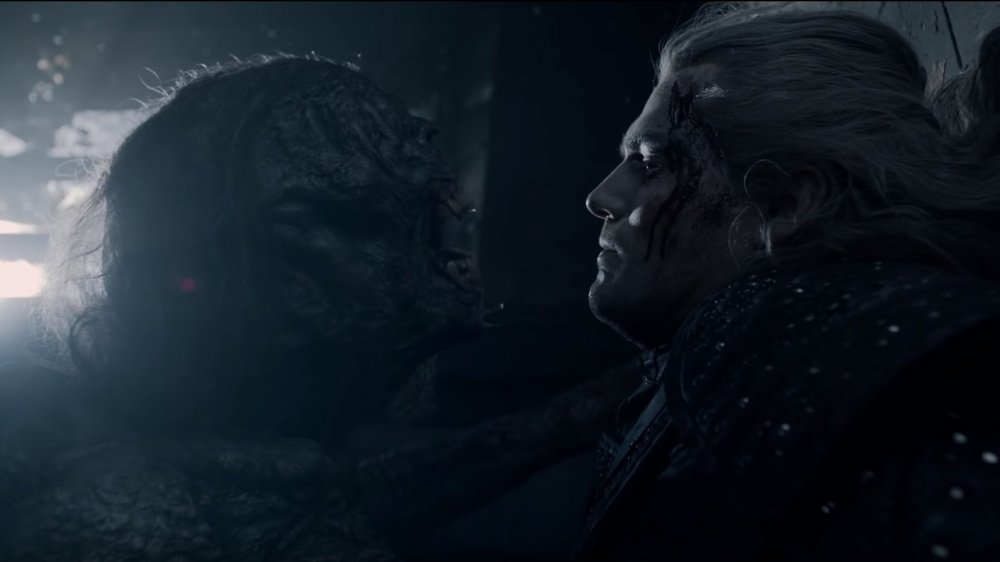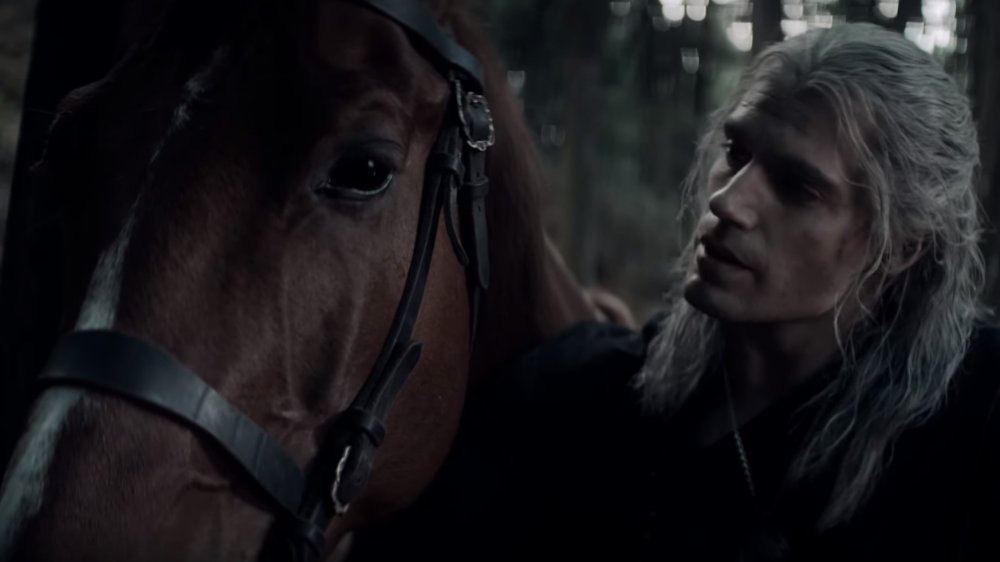The Real Mythology Behind The Witcher
Fantasy is at its best when it's rooted in human nature: when we identify with the characters' hopes, dreams, fears, and superstitions, it makes a work — even a work of pop culture — that much more powerful.
Take something like The Witcher, a book series that is now a smash hit Netflix show starring Henry Cavill. It's tale about someone who's on the outside of society, who's viewed as a necessary evil, someone who is used for his rather unique skill set then sent out of town ... actually, that sounds a little like an extreme version of regular old adulthood for most humans. It's undeniable that his world is pretty different, filled with magic-users and monsters, and the main difference there? These monsters look different than the real world's standard human ones.
Many of the monsters aren't just pulled from thin air, they're deeply rooted in mythology and folklore. Author Andrzej Sapkowski was heavily inspired by the mythos of his native Poland, and perhaps unsurprisingly, also sprinkled in some heavy influences from the other Slavic countries and nearby Russia. So yes, that means many of these monsters were once thought to prowl the darkness, to steal children, to kill the unsuspecting. Terrifying? Absolutely, but it sure does make for a great show.
Hear strange noises at night? You might have a Kikimora
The Witcher's Kikimora shows up straight away, a terrifying swamp monster that looks like it's part spider, part crayfish, and all angry. While the Kikimora is a very "real" mythological creature that shows up in Russian folklore, the more traditional version of it looks quite different.
According to the New York Public Library, a Kikimora looks more like tiny — but grotesquely shaped — woman than the crab-monsters of Netflix's show. They traditionally haunted homes, but could also be found living in lakes and ponds in the wilderness. Mostly, though, they preferred houses, and if residents started hearing strange sounds — the sort of sound that made blood run cold and anxiety go through the roof — there was a good chance a Kikimora had taken up residence. A home was more likely to attract a Kikimora if a child had died or been buried there, and they were frequently linked to the misfortunes of a mother. They were more mischievous than evil, known for leaving wet footprints across floors, tormenting animals, and interfering with the spinning of yarn.
It's not all bad news. They were typically married to a Domovoi, a more benevolent male creature that resembled a tiny imp, was born old and aged backwards, and protected his house from evil.
The Witcher's ravenous undead: The Ghouls
If there's anything that's scarier than one big monster, it's a lot of little ones ... each with their own set of teeth. The ghoul is one of those creatures that has sort of been passed from folklore into common usage, as far as works of fantasy and Halloween costumes go. But the origins of the ghoul are fascinating — and they're not what most might expect.
The ghoul, says Britannica, comes from Arabic folklore. They're actually a subspecies of djinn, a type of demon spirit most commonly found in graveyards and burial places. They were shapeshifters, and often took on the appearance of a beautiful woman to entice travelers to distraction. Then it would, of course, eat them, presumably killing their prey before the target realized there was one thing the ghoul couldn't disguise: their hooves.
According to How Stuff Works, these original ghouls preferred their meals freshly killed rather than already dead. By the 18th century, the popular version of the ghoul tended to rob graves and devour corpses, and there's a slightly different version found in Asian folklore. Ghouls called pey were drawn to battlefields, where they could drink blood from dying soldiers. And in the Tibetan Book of the Dead, there's the Pishachi ghouls, who prefer to dine on viscera and bones ... sticking with the definite theme of the creature.
It's how magic happens: The Aard sign
Blink and you'll miss it — a quick gesture, a burst of blue light, and suddenly, everyone in front of Geralt hits the ground. That sign is Aard, one of the most common magical signs in The Witcher's world, one that's basically a blast of telekinetic energy that can do some serious damage with no magic wands needed.
It's also the answer to the question of how viewers know magic is about to happen, and a similar sort of thing was seen most recently in Doctor Strange. When Games Radar took a closer look at just why Marvel's most famous Doctor didn't need to run around waving a wand, they found it was a choice director Scott Derrickson stuck with in order to make magic feel more real. In Strange's case, his movements were based on a dance movement called finger-tutting, and that? That's based on the images seen in ancient Egyptian art.
Other gestures have long been thought to hold magical power, and not just popping up a middle finger. Amulets shaped like hands have been found in ancient Etruscan tombs, and across Egypt, tombs were protected by sculptures of hands positioned into signs of power and protection (via The Evil Eye). Take a look at Christian art, and there's a theme — many of the saints are making signs of devotion or protection. Then, there's the most famous: the gesture that protects against the evil eye.
Bad news for those born during an eclipse
The Witcher — Geralt — is known by many names, including the unflattering "Butcher of Blaviken." He gets that particular moniker after being approached by both the mage Stregobor and the estranged princess Renfri, each one wanting him to kill the other. Geralt — neutral in the affairs between humans — refuses. Things go sideways, and, well, he has a new nickname. The intriguing thing about this portion of the story is that Renfri was supposedly cursed. She'd been born during an eclipse known as the Black Sun, and according to a prophecy, girls born at that time would ultimately bring about the end of civilization, and that's not something author Sapkowski made up.
According to Space, eclipses have traditionally been signs of ill omens. That's not surprising — ancient cultures were reliant on the sun and the moon for survival, and when something unusual happened, it was a terrifying deviation from the norm. There are stories of civilizations ending and warring people making peace — both because they thought the eclipse heralded the end of the world — and there were plenty of warnings given to pregnant women, too.
Dr. Sujata Mittal told Romper that traditional Indian beliefs say the negative energy given off by an eclipse has a negative impact on an unborn baby, and according to the Farmers' Almanac, it was widely believed that an eclipse would place a curse an unborn child.
Torque the Sylvan: ally of the elves
When Geralt realizes the monster he was hired to kill wasn't as monstrous as he first thought, he refuses to fulfill the contract on Torque the Sylvan. It was touch and go for them at first, with his horns and his goat's legs. But then he starts to speak.
The idea of spirits with distinctly goat-like features is a major motif throughout Greek mythology; the Panes were a group of creatures that looked just about exactly as Torque does. They were sometimes the sons of Pan and sometimes of Hermes or Zeus, but they were always pastoral spirits who looked over the herds and tended to get really, really frisky. They're similar to the Satyrs, who had the features of a donkey rather than a goat (via Theoi), and there's a lesser-known Slavic version of the idea, too.
That one has various names, including Leshy, Boruta, and Mishko Velnias. He's known as the Old Man of the Forest, and while he watches over the animals and is, for the most part, indifferent to people, he does have something of a trickster streak that makes him a danger to travelers. He typically lives alone or with his family of adopted foundlings, and according to Thought Co., he's often depicted as more human than Torque. He does, however, have horns and hooves in some stories, and in case you run into him, the best course of action is to try to make him laugh.
The Witcher's confusing Law of Surprise
There's a huge plot point that's been confusing a lot of people in The Witcher lore called the Law of Surprise. It's basically a bargain: if someone's life is saved, they offer their savior a reward, without knowing what that reward is. Still confused? A look into where it comes from might help.
According to Men's Health, it's inspired by a tradition in Slavic folklore called the Right of the Unexpected. It dates back to stories in at least the 9th century, and it's a common way to explain the transfer of control of people in particular. (There's another commonly retold version, too, where someone is promised the first thing that greets a traveler when he returns home, or the first person to speak to him.)
Here's how the stories usually go, in a simplified form: a man saves the life of another man, say, a merchant. The man accepts the Right of the Unexpected as payment, and the merchant returns to his home. There, he finds his wife is pregnant. The unborn child is the "unexpected," or the "surprise," and ends up in the care of the man as a ward or wife. The Witcher gives it a few extra layers than that, but knowing that it's a very old idea in our world helps to explain why it's taken so very seriously in Geralt's world.
From dusk until dawn: The Striga
Geralt's toe-to-toe with the Striga is one of The Witcher's epic fights, and while there's an in-depth background story, too, it's worth just taking a look at the Striga herself. She's clearly awful and yes, the Encyclopedia of Vampire Mythology says she's based on a creature going back to Roman mythology. There's a few different versions of this one: the Striga, Strigen, or Strega was a cross between a vampire and a witch, often said to be the spirit of a witch returned from the dead. She could turn into an owl and fed on the blood of children; those that didn't die immediately often wasted away. Honey cakes, chicken hearts, and — sadly — puppies were often given as offerings to keep her away from human children.
Similar tales were told in Macedonia and Romania; in the later tales she was called a Strigoiu, and just speaking her name was enough to summon her. She would typically settle into an abandoned house, take the form of a red-headed woman, and could only be vanquished by nailing her to the bottom of her coffin.
Strangely, there's also a Strigoii Morti. This creature is male, often the seventh son of a seventh son, and while he's just as terrifying as his female counterparts, he's thought to be a friend of the Roma clans.
Gee, you look familiar: The Doppler
The Doppler shows up in Episode 5, and he's essentially a creature that can take the form of anyone else. The Witcher's lore allows for some stipulations; they had to have met the person, and be of a similar size.
The name is a hint as to the inspiration: the doppelganger. While the term was only coined in the 18th century, (Atlas Obscura says it's German for "double-goer"), the idea of having a double dates back to ancient Egypt. There we have the "ka," an idea that had the soul taking a form that was seen as a spiritual version of the physical body. Other cultures believed it was simply a harmless premonition, while English and Irish traditions describe the creature as a "fetch," an apparition that signaled the death of the original.
Strangely, this is one monster that's has a basis in science. According to BBC Future, there have been instances of people who have seen their doppelgangers. One 21-year-old man described getting up one morning, then turning to see he was still laying in bed. Unable to reconcile what he was seeing, he threw himself out a window in an attempt to realign realities. He survived, underwent surgery for a brain tumor, and the phantoms disappeared. Was the folklore rooted in this medical mystery? Perhaps!
Three wishes: The Djinn
The Witcher's djinn shows up in the episode conveniently titled Bottled Appetites, and it's a creature that's familiar to almost everyone — everyone who's ever seen Aladdin, at least. Rub the lamp, release the genie, get three wishes ... right? That's the popular image of them, but the djinn from mythology and folklore are less like Aladdin's genie and more like the one from Neil Gaiman's American Gods.
According to Vice, the first mentions of the djinn (or jinn, or al-jinn) date back to the pre-Islamic Arabian world. They're neither good nor bad, they can take the form of humans and animals, and even though they're spirits, they're very physical spirits in that they can eat, sleep, and love... when they're in the human world, at least.
The original djinn could pass between the human realm and their own spirit realm freely. In the 7th century, they were worshiped as the masters of certain crafts and protectors of nature; farmers were particularly fond of them, as it was said they had the ability to make the land fertile. Poets were likely to meet one, and those that were inspired by these otherworldly beings were called sha'ir. Later, djinn made the jump from folklore to mainstream religion: they're mentioned in the Qur'an. According to LiveScience, it's now not uncommon for psychiatric patients to blame a djinn for things like hallucinations.
Refri: Little Snow White
The very first episode of The Witcher is a retelling of one of the original short stories in the series. It's called "Lesser Evil," and — as The Artifice points out — it's actually a seriously dark retelling of the classic tale of Snow White. In Sapkowski's version, Renfri is Snow White and — as she mentions in the show — she killed the Hunter sent to kill her, then continued down the path of death and destruction. She's an assassin in the books, and travels with a band of equally deadly dwarves.
Today, most people are more familiar with the Disney version of Snow White, but the version chronicled by Jacob and Wilhelm Grimm and finalized in 1857 was pretty different, says the International Literacy Association. That starts with the stepmother telling the Hunter to bring back Snow White's liver and lungs — he brings back the organs of a boar, which she eats. The dwarves have no names, the poison apple is still there, and the prince? He buys the seemingly dead Snow White, and she's only revived when the servants drop her.
There's also a reward comeuppance at the end, when the evil stepmother is given iron slippers, heated to red-hot, to dance in until she collapsed and died. And that's the version the Grimms dialed back a bit. It earlier versions, the prince slaps the poisoned apple out of Snow White's mouth when he hits her sleeping form, and it's her mother who demanded her death. Yikes.
An illicit love affair: Foltest and Adda
When Geralt takes on the Striga, he's not just taking on some random monster — this one has a backstory. She's actually a princess, and things get complicated when it's revealed that her mother was hooking up with the king. Ordinarily, that's not a problem — but King Foltest and Adda were brother and sister.
Icky? Absolutely, but it's also ridiculously common in mythology and folklore. Take Zeus and Hera, the rulers of the pantheon of Greek gods (via Theoi). They were brother and sister. Zeus hooked up with his sister Demeter, too, and they had Persephone ... who later had two children with her father. Persephone is the one at the heart of one of Greek mythology's most well-known love stories, the myth that explains the seasons. After Hades falls in love with her and spirits her away to the underworld for a few months out of the year, that's when winter happens. Oh, and Hades? That's her uncle.
And it's not just the Greeks, either. King Arthur — the most chivalrous of them all — had a son, Mordred (via The Camelot Project). The mother was Arthur's half-sister, Morgause. Most versions of the tale say that they weren't aware of their relationship before Arthur tricked her into sleeping with him by pretending to be her husband, and... that somehow just got even worse.
Toss a coin to your witcher: The Witcher
Whatever you call him, don't call him human. Newcomers to the franchise might find themselves wondering what, exactly, Geralt of Rivia is, if he's not human. The idea that witches — and witch-hunters — are something other than human is one that's rooted in Slovenian myth.
According to Supernatural Beings from Slovenian Myth and Folktales, some of the oldest sources written on witches and wizards describe them as demonic creatures rather than human ones. And sometimes, they were actually a gift from God.
Traditions and tales surrounding wizards have more elements of a shaman or a druid than a typical magic-user we think of today, and take Kresnik (proper name). He was gifted to humankind as a God-sent protector, tasked with keeping humanity safe in the face of a dragon. A kresnik (not a proper name) was something similar; these magical beings from old folklore are often more shaman than the fire-and-ice magic users we think of today, and were said to fight witches and other demonic creatures. Sounds sort of familiar, doesn't it? Anyone know how we can get him to come back?
